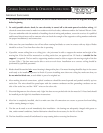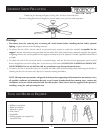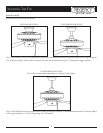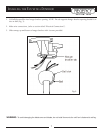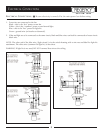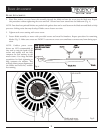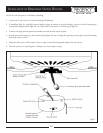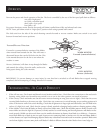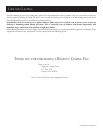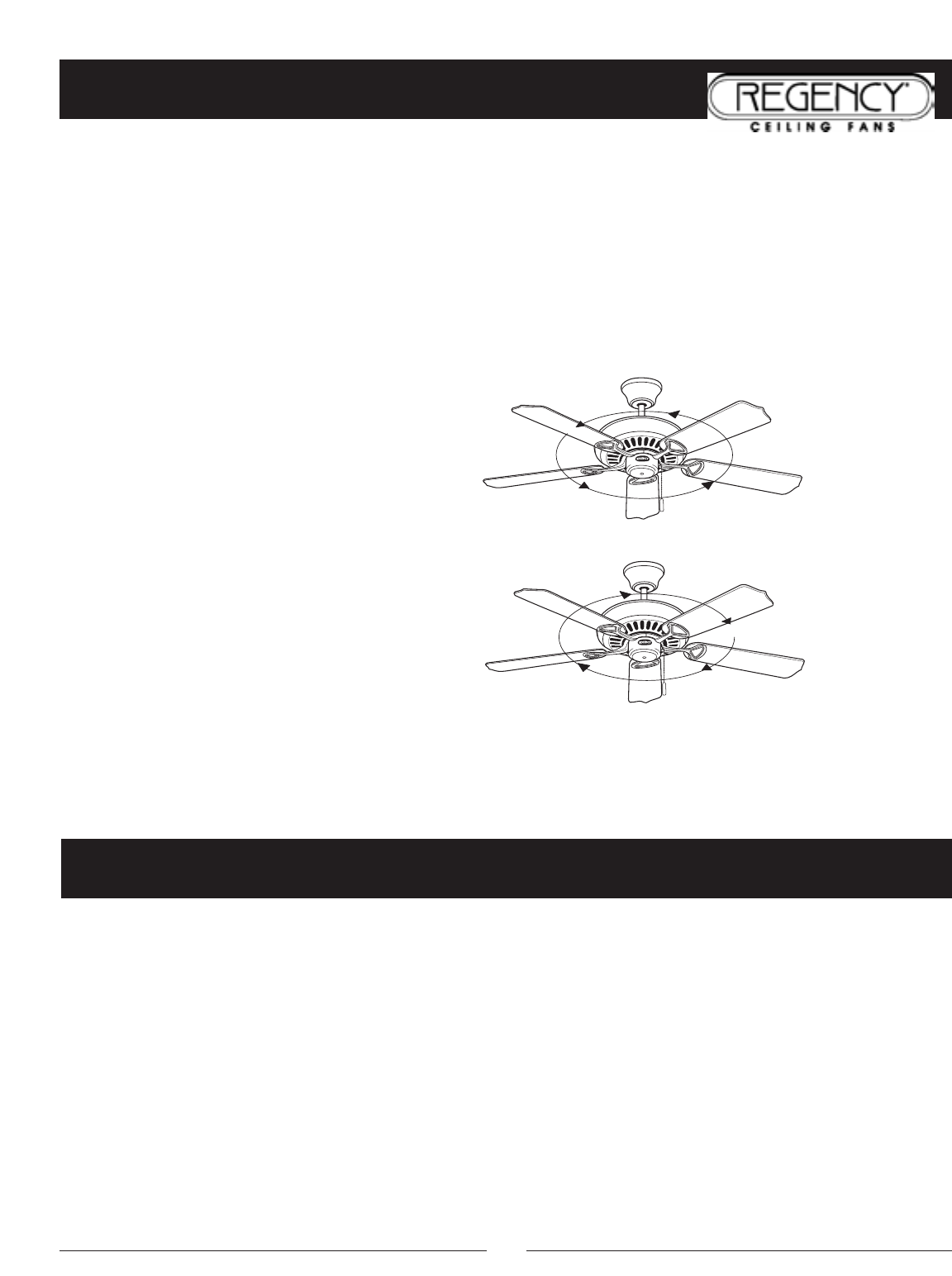
OPERATION
11
Tu rn on the power and check operation of the fan. The fan is controlled by the use of the fan speed pull chain as follows:
one pull = high speed
two pulls = medium speed
three pulls = low speed
four pulls = off
For proper functions, ensure that the fan speed pull chain is pulled down fully and released each time.
NOTE: Leave pull chain switch in “high speed” position when using optional wall control.
The slide switch on the side of the switch housing controls forward or reverse rotation. Make sure switch is not stuck
between forward and reverse positions.
IMPORTANT: To prevent damage or cause injury, be sure that fan is switched to off and blades have stopped moving
completely before attempting to change direction of rotation.
1. If fan will not start: Check main and branch circuit breakers and/or fuses. Check line wire connections to fan and switch
housing wiring. Make sure forward/reverse switch is set to one or the other position, not stuck in between.
2. If fan is noisy: Check and make sure that all screws in motor housing are snug (but not over tight). Check that the screws
securing blade brackets to the motor are tight. Check that wire connectors in switch housing are not rattling against each
other or the interior wall of the switch housing. Check that all glassware is finger tight and that bulb(s) are well held in the
sockets, if a light kit is used. Check that the canopy is firmly attached to hanging bracket and not vibrating against ceiling.
3. If fan wobbles: Check that all blades are firmly screwed into blade arms. Check that all blade arms are firmly secured to the
motor. Make sure that the light kit (if present) is firmly attached to switch housing and that all glassware and shades are fas-
tened properly. Wobble can also result from even the smallest deviations in distance from blade tip to blade tip - if measure-
ments from blade tip to blade tip are not equal, loosen screws connecting blade to bracket one at a time and adjust blade(s)
so that distances are equal. Interchanging adjacent blades may redistribute mass and result in smoother operation. Blade arms
can be bent slightly to restore same pitch to all blades if a blade is different than the other blades when viewed edge on.
TROUBLESHOOTING - IN CASE OF DIFFICULTY
Forward/Reverse Direction:
Forward is a counterclockwise rotation of the blades
when viewed from beneath the fan. This will create a
downward breeze that can be felt below the fan. This
is the normal direction for the fan to run when the
weather is warm.
Reverse (clockwise) will draw air up through the blades
and towards the ceiling, down the walls, and into the
living space during the cooler months.
WARM MONTHS
Forward (counterclockwise)
COOL MONTHS
Reverse (clockwise)




